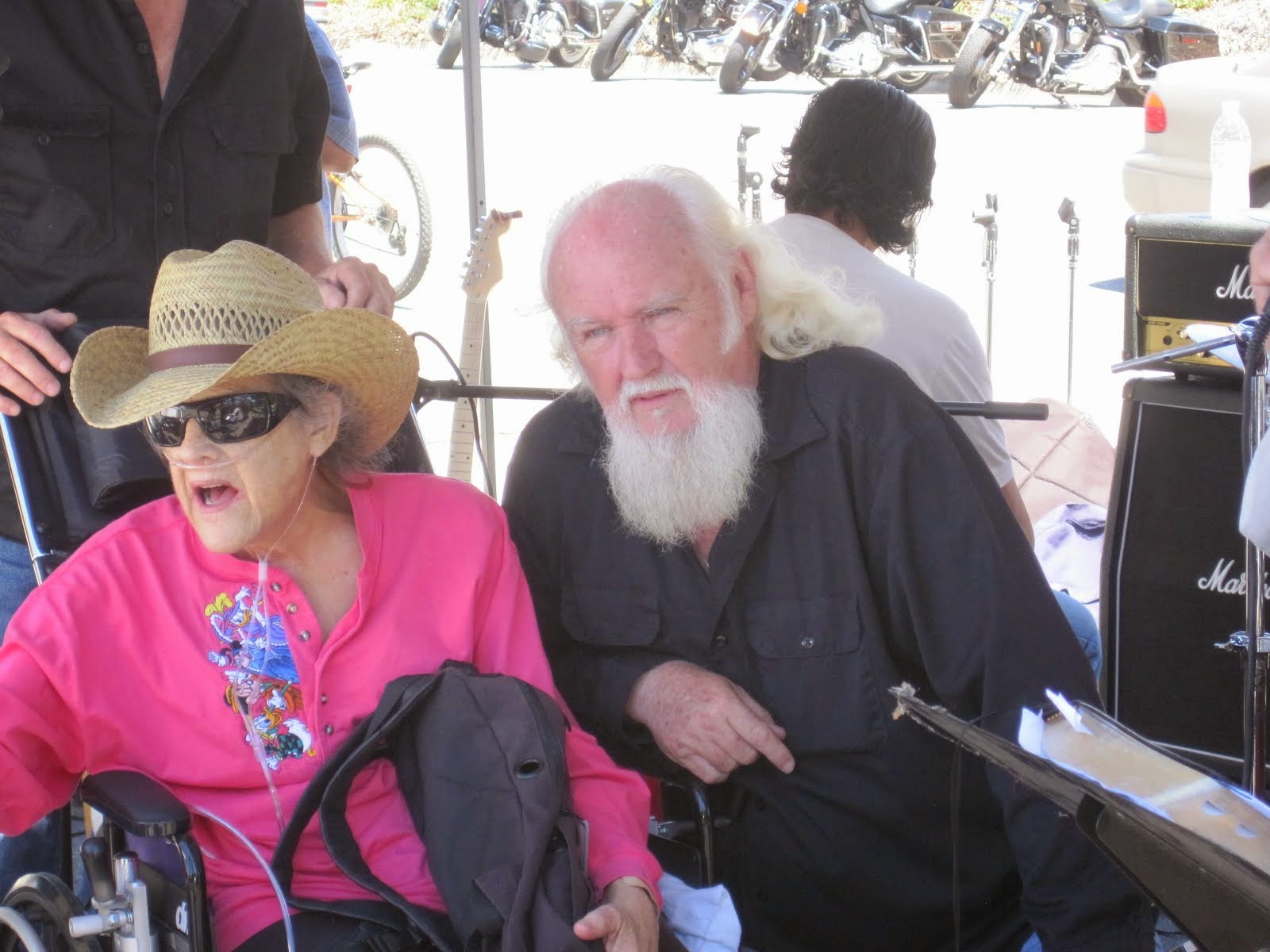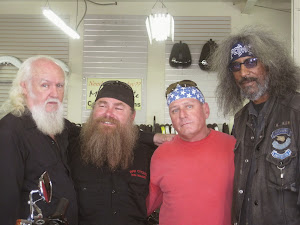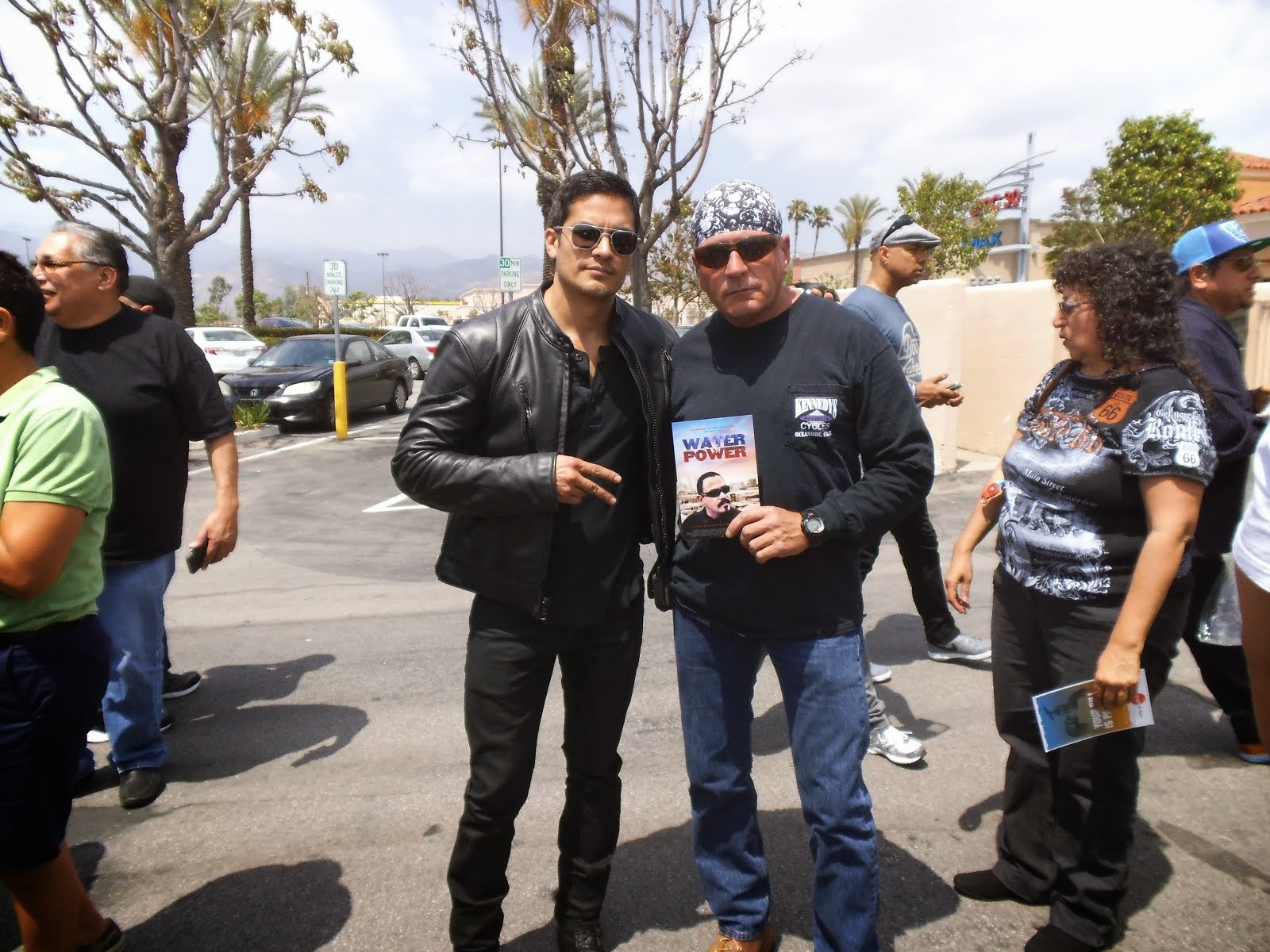OFF THE WIRE, F.Y.I.
By Don Kelley, Probation and Parole Supervisor, Montana Department of Corrections
Gang issue reaches into corrections - Part I
This five part series is intended to provide insight into the history, function and hierarchy of some of the most violent of worlds.
This information can help officers recognize some of the risks associated with the supervision of these offender groups and a few real world techniques to reduce risk during and after dealings with them.
To develop an understanding of gang behavior and why street gangs are an issue for many communities across the state, it is important to begin with a history of these groups.
Black Americans have a 75-year history of street gang involvement, primarily in Los Angeles, but their Latino counterparts have a gang history that reaches to the beginning of the 1900s.
Black street gangs began to appear in the 1920s in the downtown area of Los Angeles where they had settled into ethnic neighborhoods. In the years that followed they moved southward to Slauson Avenue. The area between Slauson and Manchester was predominantly white, but the black influence was growing rapidly.
Many of these gangs were collections of family and friends involved in prostitution, robbery and extortion. These gangs faded into history around 1940. It is believed that the original members had aged and the youth of the era distanced themselves from the gangs. Also, the start of World War II took many area youth into the armed forces.
Shortly after the war’s end, the area around Central Avenue and East Los Angeles again saw gangs on the rise. Primary gangs of this era were known as 28th Street and 31st Street.
The 1950s saw a rise in black social clubs in the communities. Some of these were early attempts at developing political organizations. Others had no real purpose other than social gatherings. Most of these clubs were territorial and ethnically organized with visible leadership, and chains of command.
Many of these social clubs soon developed into more violent and illegal organizations, getting involved in petty thefts, robbery and assault.
Murder among gangs still was extremely rare. The weapons of choice were guns, baseball bats, knives – occasionally used to settle territorial disputes.
The Los Angeles Police Department began to identify “street gangs” around 1965. Many of these gangs were car clubs not directly involved in street fighting or territorial disputes. Some of the most popular car clubs of the ’50s and ’60s were the Coasters, the Highwaymen, Low Riders and Road Devils. Many clubs were depicted by Hollywood as much more violent than the facts support.
The era of the ’60s saw a decline of the car clubs as members again aged and faded into the communities. The attention of the community turned to political organizations that were developing. Many members who were in their teens in the early ’60s later turned their attention to other directions and became members and leaders of the Black Panther Party. Escalation of the Vietnam War also may have contributed to the decline in street gang activity then.
Beginning in the early 1980s, El Salvadore experienced a rampant civil war, lasting about 12 years. During this time, some 100,000 people were killed or missing. In the midst of the war, more than 1 million people fled to America.
The Salvadoran refugees, both legal and illegal, began to settle in California and Washington, DC. Individuals with ties to La Mara (one of El Salvadore’s original violent street gangs) were among those immigrating to the United States. Upon arrival, they encountered severe cultural differences and hatred in relation to existing American street gangs. Mara Salvatrucha (MS) quickly asserted itself and became known as a gang indulging in extreme violence.
Many of the members are former members of FMLN (Farabundo Marti National Liberation Front). The FMLN consisted of peasant guerrilla units trained in the use of explosives and firearms by the CIA in order to fight soldiers of the “Fourteen Families”
The primary difference between MS and traditional American street gangs is the international ties they continue to maintain. The continuing contact between the El Salvadoran military and the South American drug cartels allows for a large amount of easy cash and access to automatic weapons that are difficult for traditional gangs to obtain.
For example, a hand grenade on the streets of El Salvadore sells for $1 and an M-16 rifle sells for $225. The supply of handguns, however, is limited, forcing MS to trade them for narcotics.
By 1980, Los Angeles had an estimated 30,000 gang members. Ten years later, more than 300 Blood and Crip sets operated in Los Angeles County, with more than 150,000 members. Crip and Blood sets can be found in more than 100 American cities.
EDITOR’S NOTE: This is the first in a series of articles, reprinted with permission, about street gangs and motorcycle clubs in Montana, issues for both correctional officers and probation and parole officers.
skip to main |
skip to sidebar




Bill & Annie

Art Hall & Rusty


NUFF SAID.......


































































OOHRAH

ONCE A MARINE,ALWAYS A MARINE

GIVING BACK


MOUNT SOLEDAD














BIKINI BIKE WASH AT SWEETWATER










FRIENDS





BILL,WILLIE G, PHILIP










GOOD FRIENDS


hanging out

brothers


GOOD FRIENDS

Good Friends

Hanging Out




Bill & Annie
Art Hall & Rusty
Art Hall & Rusty


NUFF SAID.......



















NUFF SAID......



























Mount Soledad




BALBOA NAVAL HOSPITAL
RUSTY DANNY

ANNIE KO PHILIP

PHILIP & ANNIE

OUT & ABOUT

OOHRAH...

OOHRAH
ONCE A MARINE,ALWAYS A MARINE

ONCE A MARINE,ALWAYS A MARINE
American Soldier Network GIVING BACK

GIVING BACK
CATHY & BILL
PHILIP & DANNY & BILL

MOUNT SOLEDAD
bills today
EMILIO & PHILIP
WATER & POWER
WATER & POWER
bootride2013



BIKINI BIKE WASH AT SWEETWATER







ILLUSION OPEN HOUSE

FRIENDS


GOOD FRIENDS



BILL,WILLIE G, PHILIP









GOOD FRIENDS

GOOD FRIENDS
Friends
- http://www.ehlinelaw.com/losangeles-motorcycleaccidentattorneys/
- Scotty westcoast-tbars.com
- Ashby C. Sorensen
- americansoldiernetwork.org
- blogtalkradio.com/hermis-live
- davidlabrava.com
- emiliorivera.com/
- http://kandymankustompaint.com
- http://pipelinept.com/
- http://womenmotorcyclist.com
- http://www.ehlinelaw.com
- https://ammo.com/
- SAN DIEGO CUSTOMS
- www.biggshd.com
- www.bighousecrew.net
- www.bikersinformationguide.com
- www.boltofca.org
- www.boltusa.org
- www.espinozasleather.com
- www.illusionmotorcycles.com
- www.kennedyscollateral.com
- www.kennedyscustomcycles.com
- www.listerinsurance.com
- www.sweetwaterharley.com

Hanging out

hanging out
Good Friends

brothers
GOOD FRIENDS

EMILIO & SCREWDRIVER

GOOD FRIENDS
Danny Trejo & Screwdriver

Good Friends
Navigation
Welcome to Bikers of America, Know Your Rights!
“THE BIKERS OF AMERICA, THE PHIL and BILL SHOW”,
A HARDCORE BIKER RIGHTS SHOW THAT HITS LIKE A BORED AND STROKED BIG TWIN!
ON LIVE TUESDAY'S & THURDAY'S AT 6 PM P.S.T.
9 PM E.S.T.
CATCH LIVE AND ARCHIVED SHOWS
FREE OF CHARGE AT...
BlogTalkRadio.com/BikersOfAmerica.
Two ways to listen on Tuesday & Thursday
1. Call in number - (347) 826-7753 ...
Listen live right from your phone!
2. Stream us live on your computer: http://www.blogtalkradio.com/bikersofamerica.
A HARDCORE BIKER RIGHTS SHOW THAT HITS LIKE A BORED AND STROKED BIG TWIN!
ON LIVE TUESDAY'S & THURDAY'S AT 6 PM P.S.T.
9 PM E.S.T.
CATCH LIVE AND ARCHIVED SHOWS
FREE OF CHARGE AT...
BlogTalkRadio.com/BikersOfAmerica.
Two ways to listen on Tuesday & Thursday
1. Call in number - (347) 826-7753 ...
Listen live right from your phone!
2. Stream us live on your computer: http://www.blogtalkradio.com/bikersofamerica.
Good Times
Hanging Out

Key Words
- about (3)
- contact (1)
- TENNESSEE AND THUNDER ON THE MOUNTAIN (1)
- thinking (1)
- upcoming shows (2)
Blog Archive
-
▼
2010
(4242)
-
▼
November
(629)
- NATIONWIDE, Americans Are Living (And Dying) In A ...
- CYBER SCAMS, BE WARNED....The 12 cyber scams of Ch...
- Media Campaign Begins, Head Injuries: Why Motorcyc...
- Football Helmets - NY Times, Used helmets worn by ...
- New Zealand, Warehouse new gang base
- Growth of San Diego's Navy fleet tied to tension i...
- Canada, ,Salmon Arm, Kelowna. 'They were up to no...
- SPINELESS PUKE BAG DISTRICT ATTORNEY, JONATHAN BLO...
- What are some good responses to this helmet statem...
- DOT vs. ECE Helmet Safety Standards
- Australia, Sydney, Strike force digs deep into dea...
- South Africa, Car driver causes chaos at PE bikers...
- Washington, DC, EDITORIAL: TSA's security charade
- New Delhi,India, IAS Officer Arrested For Barterin...
- Denver, CO. Donors line up to replace lost Christm...
- THE LAW AND YOU 1
- USA, The Eternal Value of Privacy, "Absolute power...
- Australia, Bandidos member found with gun......
- F .B. I.Deprivation of Rights Under Color Of LAW
- How to obtain a CCW permit, San Diego,Ca
- New Zealand, Marlborough, Lone Legion M/C, Warehou...
- CCW (Concealed- Weapons Permit) San Diego, Ca, Lit...
- US v. Camp Zoe
- DAYTONA, Private Company’s Registration of Bike We...
- CHESTER, S.C. These bikers ride for a cause, Iron ...
- Nevada, Carson City Probation Officer Accused of S...
- DUBAI, United Arab Emirates, Swiss motorbike cham...
- CAN WE RECORD COPS? Phone Calls and Research by Jo...
- Well, if you’re not doing anything wrong and have ...
- ANGOLA 3, IN ROBERT KING’S WORDS: “EVERYTHING LEGA...
- Ex-Marine Marching Across America Stops in Trenton
- South Attleboro, MA. Joes Sock Fund – Can you help?
- Midland, Texas - Feds Push for Nationwide Motorcyc...
- DOJ Components' FOIA Service Centers/Liaisons
- United States Dept of Justice, Freedom of Informat...
- READERS SOUND OFF, Case Against Motorcycle Helmet ...
- Bahrain, Parading patriotism!!!!!!!!!!!!!!!!
- Appeals court derails use of GPS in case, Decides ...
- LITTLETON, Colo. Charity donations stolen
- Sons of Anarchy: Sonny Barger Cameo, Featuring Att...
- Freedom of Information Act ,FOIA Reference Mater...
- More excellent info here for helmets Transportatio...
- New Zealand, Gang members grieve for powerful, fe...
- CAN WE RECORD COPS?
- North Park, San Diego,Ca, Pepper-Spraying Men Rob ...
- OCEANSIDE, Calif. FYI: Marine Corps presents most ...
- EXCLUSIVE: Hells Angel Sonny Barger to Guest on 'S...
- United States Marine Corps, Marines Move Heavy Met...
- Canada, Hells Angels busted in Salmon Arm
- CCW (Concealed- Weapons Permit) San Diego
- Phoenix, AZ, Police ID Man Shot to Death Near Priv...
- Health care dictatorship: A crime against America
- Florida, Bikers, City Hall team up to honor veterans
- Fully Informed Jury Association
- Canada, Kelowna connection to bikers bust, Police...
- Company says it owns Bike Week name
- Where The Burgess Case Stands Now
- Photo`s, Videos,or Recording Your Traffic Stop, of...
- Australia, Senior officer 'hacked police computer ...
- Mexico's modern city succumbs to drug violence, MO...
- The One Big Investigation
- San Diego drug tunnel had railcar, tons of pot, an...
- Canada, Police 'harassment' frustrates Pammett
- Australia, Bikies charged over fight in Fremantle
- Australia– Wiley Park, Alleged Bandidos OMCG memb...
- New York City Police Photograph Irises of Suspects
- FBI Thwarts Somali-Born Teen's Car Bombing, SCORE ...
- Orange County, CA, He Shall Be Set Free
- The First Banning of an MCs Colors in the USA
- Oppose S.510 - Do not take the chance of regulatin...
- San Diego,Ca, It’s easier riding for local motorcy...
- ALBANY, GA, Motorcycle club making holidays extra...
- Fond du Lac, WI - FdL police officer gets 3-day su...
- Taking Pictures of a Police Officer
- Biker Donations Help Feed Boys, Girls
- The Feds’ Illegal/Unauthorized/Murderous War on Bi...
- PENNSYLVANIA:Helmet debate begins anew NTSB puts i...
- Australia, Gypsy Jokers 'drug running' to mines
- Gangs Still Active in US Military
- Introducing Preacher Chuck D's Alpha Biker Road Rash
- 1st Annual Big Tom Berg Memorial Toy Drive
- New Zealand, Gang members grieve for powerful, fea...
- Australia, Bikers on drug charges in WA
- Australia, Bikie's partner guilty of stealing
- The Case Against Motorcycle Helmet Laws, Biker Ri...
- Sons of Silence Harley to Law Museum
- Australia, Bandidos gang member points loaded gun ...
- Australia, Finks front court over CCC contempt cha...
- Canada, Back-to-back suspicious fires in B.C. link...
- Former Pagan held for trial in shooting of College...
- Australia, Finks charged with contempt over motor...
- United Kingdom, Police chief faces misconduct probe
- QUOTES,
- Australia, Finks bikies face contempt charges in WA
- Co-Sponsor H.R. 1475 Good Time Bill
- Not specifically biker related... but certainly ri...
- SOUTH CAROLINA: NTSB Asks States to Improve Motorc...
- Pennsylvania, Helmetless riding a costly freedom
- Massachusetts, Attorney Paul Lancia Joins New Eng...
- "Hermis Live!"- 46 Minutes UNTIL SHOW
-
▼
November
(629)
Bikers of America, Know Your Rights!... Brought to you by Phil and Bill
Philip, a.k.a Screwdriver, is a proud member of Bikers of Lesser Tolerance, and the Left Coast Rep
of B.A.D (Bikers Against Discrimination) along with Bill is a biker rights activist and also a B.A.D Rep, as well, owner of Kennedy's Custom Cycles
